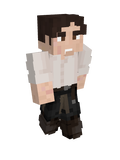Alathra:Humans: Difference between revisions
m CSS test |
m CSS test |
||
| Line 1: | Line 1: | ||
{{#css: | {{#css: | ||
.subrace { | .subrace { | ||
flex-basis: | flex-basis: 45%; | ||
border: 1px solid; | border: 1px solid; | ||
border-radius: 10px; | |||
padding: 0 10px 10px 10px; | |||
} | } | ||
}} | }} | ||
| Line 31: | Line 33: | ||
== Minor races == | == Minor races == | ||
<div style="display:flex; justify-content: | <div style="display:flex; justify-content: space-evenly; flex-wrap: wrap;"><div class="subrace"> | ||
<h3>[[Homo Alius]]</h3> | |||
<small>'''Average lifespan:''' 80 years</small><br> | <small>'''Average lifespan:''' 80 years</small><br> | ||
<small>'''Height range:''' 1.6 - 2 meters</small> | <small>'''Height range:''' 1.6 - 2 meters</small> | ||
[[Homo Alius]] are a near-human race distinguished by their vibrant eyes, more prominent canine teeth on both the upper and lower jaws and a slightly more muscular build. With keen senses, especially sight and smell, with higher metabolisms and a strong preference for meat-based diets. Deeply social, they form closely knit communities where every member plays a vital role. Though largely atheistic, they hold a deep respect for nature, often personified in myth. | [[Homo Alius]] are a near-human race distinguished by their vibrant eyes, more prominent canine teeth on both the upper and lower jaws and a slightly more muscular build. With keen senses, especially sight and smell, with higher metabolisms and a strong preference for meat-based diets. Deeply social, they form closely knit communities where every member plays a vital role. Though largely atheistic, they hold a deep respect for nature, often personified in myth.</div><div class="subrace">Test</div></div> | ||
{| class="wikitable" style="width: 48%; border:1px solid #ccc; border-radius:8px; margin-bottom:10px; font-size:14px; display:inline-table;" | {| class="wikitable" style="width: 48%; border:1px solid #ccc; border-radius:8px; margin-bottom:10px; font-size:14px; display:inline-table;" | ||
! style="font-size:115%; text-align:left;" | <h3>[[Elysians]]</h3> | ! style="font-size:115%; text-align:left;" | <h3>[[Elysians]]</h3> | ||
Revision as of 01:28, 28 July 2025
| Human | |
|---|---|
| Major race | |
 Example appearance | |
| Characteristics | |
| Average lifespan (max) | 70 years (140) |
| Height range | 1.50 - 2.00 m (4′11′′ - 6′6′′) |
| Strengths | Versatile and adaptive; strong leadership, diplomacy, innovation, and craftsmanship. |
| Weaknesses | No innate magic; physically average; short lifespan compared to most races. |
| Back to Major races → | |
Humans, also known as Men or Mankind, are one of the most widespread and versatile peoples in the world of Alathra. Though lacking the resilience of Dwarves or the enduring lifespans of Elves, Humans are known for their ambition, adaptability, and ingenuity. They are builders, explorers and settlers, at times both diplomatic and conflict-seeking, ultimately capable of thriving in nearly any environment with enough time and effort. Most Humans are found in temperate regions, where their cities, farms, and roads shape much of the known world. However, their adaptability means they can be found in almost every climate: from frozen highlands to arid deserts and beyond.
Humans have shaped much of Alathra's history through numbers, cooperation, and vision. Their civilizations rise and fall rapidly, their ideas spread quickly, and their conflicts often drive major turning points in the world’s story.
Strengths and weaknesses
Humans are among the least naturally magical races in Alathra. They are born without any inherent connection to magical forces, and arcane energy does not flow easily through them. Because of this, Human mages are rare and often face great personal cost.
Those who do pursue magic must rely on ancient knowledge, external patrons, or dangerous rituals to gain power. Such paths frequently leave lasting marks (whether physical, mental, or spiritual) and only few survive unchanged. Despite the danger, some still walk this road, chasing forbidden power or deeper truths.
What Humans lack in magical prowess, they make up for with willpower and innovation. Human societies rely heavily on craftsmanship, engineering, and innovation to progress. Their tools, structures, and machines are often powered by manpower, simple mechanics, or fuels such as wood, coal, or lava.
Many Human civilizations value discipline, learning, and pragmatism. Through study and experimentation, they have developed a wide range of technologies and governing systems. Their short lifespans encourage urgency, leading to rapid cycles of growth, conflict, and reinvention.
Minor races
Homo Alius
Average lifespan: 80 years
Height range: 1.6 - 2 meters
Elysians |
|---|
|
Average lifespan: 120 years |